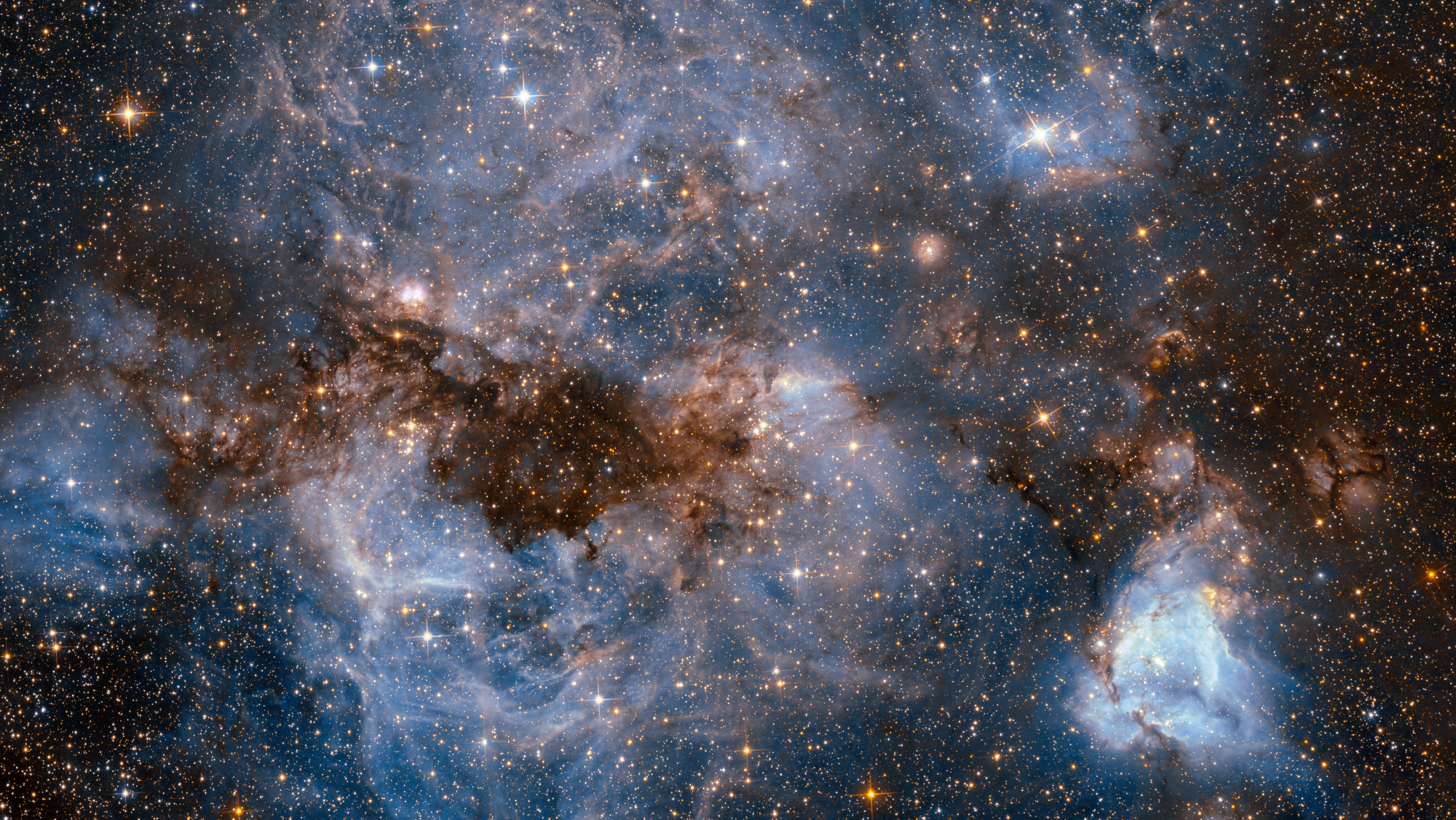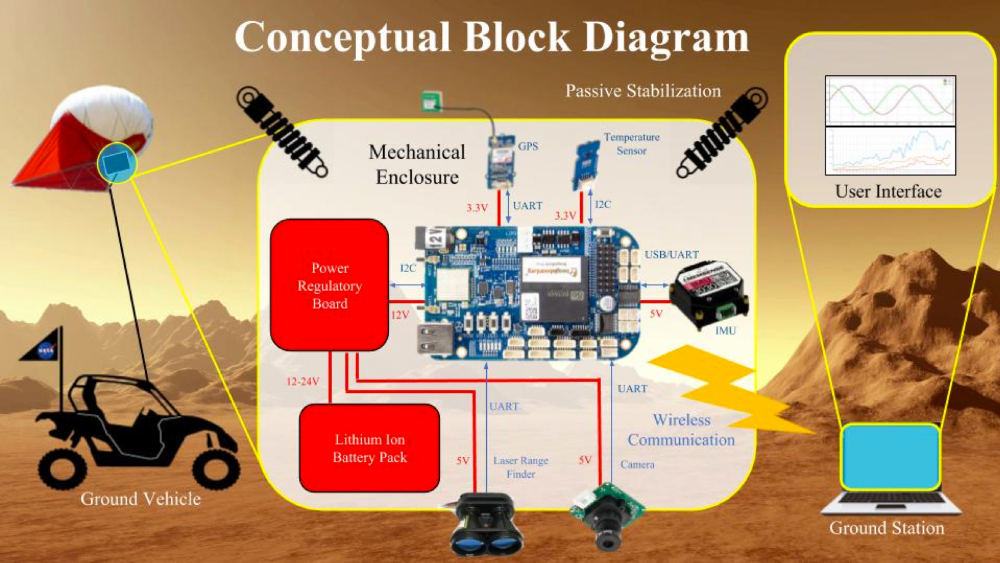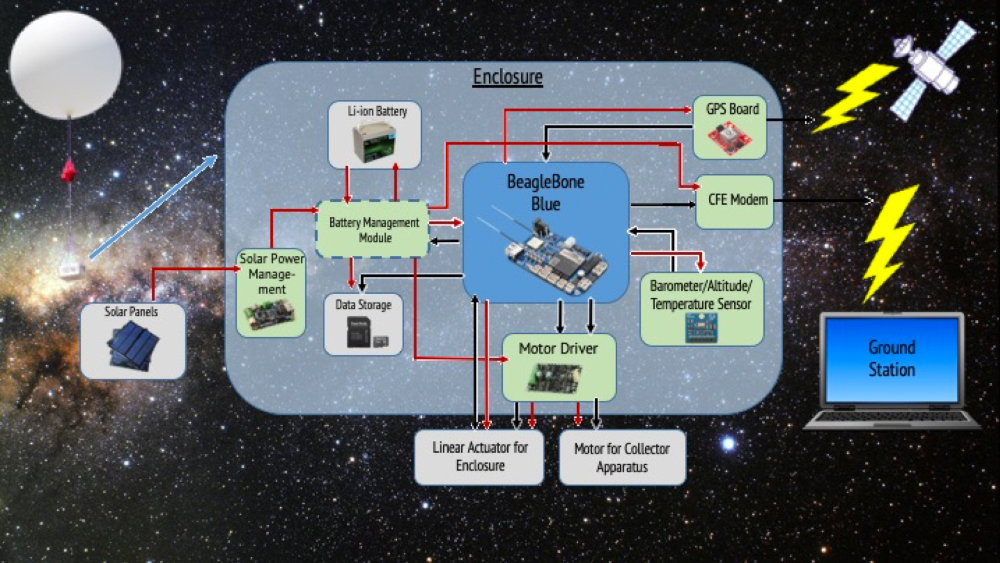
In 2016, Texas Space Technology, Applications and Research (T STAR), a small Bryan-College Station area startup company, came to the Department of Engineering Technology and Industrial Distribution at Texas A&M University with a new concept to create highly motivational capstone design projects for undergraduates.
After retiring from NASA, Matt Leonard ‘86, the president of T STAR, decided to implement an idea he had to bring the public sector closer together with academia by bridging the gap with a private company using the public-private-academic (PPA) model.
“To be highly successful and to create a sustainable model,” Leonard stated, “the prototype requirements of the public sector need to be communicated to the innovation and creativity available at the undergraduate level of engineering programs within academia. Once a prototype has been developed by a capstone team, it needs to be supported and converted to a product by a private sector company.”
Leonard decided to test his model when he created T STAR by collaborating with various divisions within NASA to identify projects which could be undertaken successfully by capstone students.
“I looked across all of the departments within the College of Engineering at Texas A&M,” said Leonard, “until I found the Electronics Systems Engineering Technology (ESET) and Mechatronics Engineering Technology (MXET) programs. Their approach to capstone projects was exactly what I was looking for and it was a perfect fit.”
After piloting this model with a couple of small projects, T STAR is now moving forward with sponsoring multiple projects each semester.
This semester, the two projects T STAR is sponsoring for NASA customers are named Helikite and Dust Collector. Helix, the MXET capstone team, will be taking on the Helikite project while the ESET team, Floating Logistics and Instrumentation (FLI), will be designing a prototype to meet the requirements of the Dust Collector project.
Both of these projects have significant participation from NASA scientists and engineers, and both teams have visited the Johnson Space Center in Houston to meet their NASA customers and kick off their projects.

A conceptual block diagram of the Helikite project shows that the team will design and develop a system capable of being attached to an ultra-light aircraft towed by a rover-type vehicle. The payload will be able to make a number of different measurements using an inertial measurement unit and integrate that with light detection and range finding, a global positioning system, temperature and imagery that can be downlinked to a ground station for display. This project is the first step that NASA scientists are taking in the development of a new capability to explore Mars and other planets.
The members of the Helix capstone team are Micah Erikson, Randall Matthews, John Tran, and Jeffery Watts.

FLI will be tasked to design and build a new electromechanical system that has the ability to deploy a dust collector assembly that will rotate slowly, collecting particulate debris at the edge of space (over 100,000 feet). The system will autonomously monitor its altitude while attached to a weather balloon.
Once the balloon reaches a specific altitude, it will deploy the dust collector assembly. When the altitude is reduced to another predetermined level, the apparatus will close, thus protecting the collected debris from contamination at lower elevations.
During a mission of up to 12 hours, FLI’s system (codename Cardinal) will wirelessly communicate operational and system health data back to a NASA ground station.
Members of the FLI team include Johnathan Liang, Caleigh Fults, Jennifer Robinson, and Nick Prax.
The project is sponsored by Dr. Marc Fries, a planetary scientist in the Astromaterials Research and Exploration Science Division at the Johnson Space Center.
Based on the continued success of the PPA model, the ESET and MXET programs look to expand upon partnering with other small companies that require embedded systems hardware and software design support for their public-sector customers.
The model thus far has created a win-win scenario for all collaborators while providing ESET and MXET students with challenging and rewarding capstone design experiences.